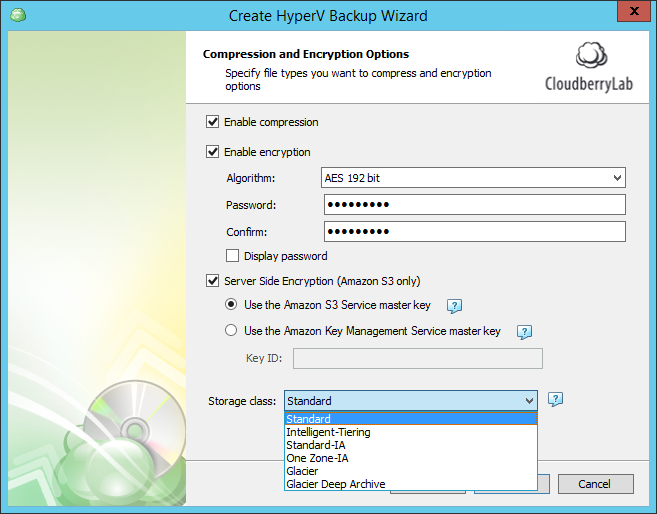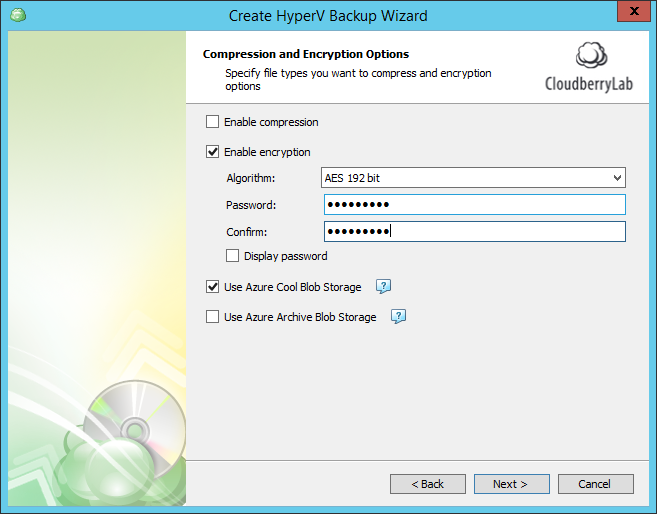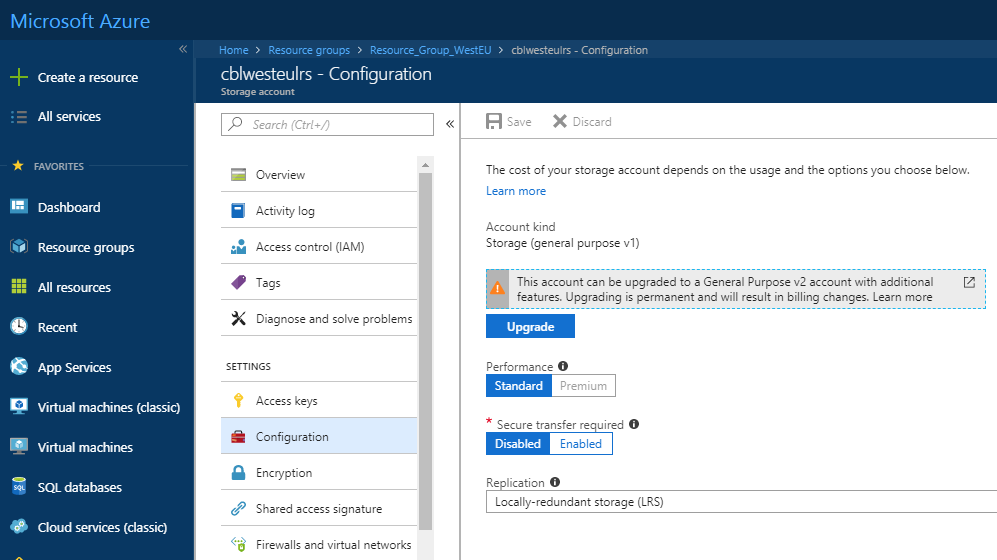Step 6. Compression & Encryption Options
Specify compression and encryption options.

- To compress your backup, select Enable compression check box
- To enable AES encryption, select Enable encryption check box, then specify the encryption algorithm and the encryption password
To learn more about the AES encryption, refer to Advanced Encryption Standard specification.
If you selected Save your backup plan configuration to the destination storage check box on Plan Name wizard step, this configuration file will not store the encryption password for security reasons, so keep this password elsewhere to be able to restore the backup's contents afterward.
Note that if you change any of the encryption settings (algorithm or password) for the existing backup plan, a full backup will be executed on the next backup plan run
- To enable the server-side encryption, select the Server Side Encryption check box.
Note that this feature is available only if you selected Amazon S3 as the cloud storage for your backup destination.
Once the Server Side Encryption check box is selected, specify the access parameters:
- Use the Amazon S3 Service master key. Select this option, to allow Amazon S3 to decrypt the data for anyone granted with the permissions to access this data in the cloud.
- Use the Amazon key Management Service master key Select this option to allow Amazon S3 to decrypt data for anyone granted with the permissions to access this object in the cloud along with permissions to use a specified master key.
To learn more about AWS Key Management Service, refer to AWS Key Management Service Overview article.
- Specify the Amazon S3 storage class for your backup plan. The following storage classes are available:
- Standard
- Intelligent-Tiering
- Standard-IA
- One Zone-IA
- Glacier
- Glacier Deep Archive
To learn more about the storage classes provided by Amazon, refer to Amazon S3 Storage Classes chapter.
Microsoft Azure Blob Storage
If you selected Microsoft Azure as destination storage for your backup, you can specify the Azure Blob Storage settings.

The following settings are available:
- Archive Blob Storage. Select this option to use the Archive Blob storage class. This is a low-cost storage option for infrequently accessed data. Opposed to Hot and Cool storage tiers, data retrieval from the Archive Blob storage takes up to several hours.
- Cool Blob Storage. Select this option to use the Cool Blob storage class. This storage tier has lower storage costs and higher access costs compared to hot storage. This tier is intended for data that will remain in the cool tier for at least 30 days.
This feature is only supported for General Purpose v2 Azure accounts. If you are using another kind of account, you need to upgrade your account to be able to use this feature.

Be aware of additional charges and increased blob access rates in case you upgrading your Azure account.
See the following document to learn more about the difference between Azure storage tiers: Azure Blob Storage - Hot, cool, and archive storage tiers.

